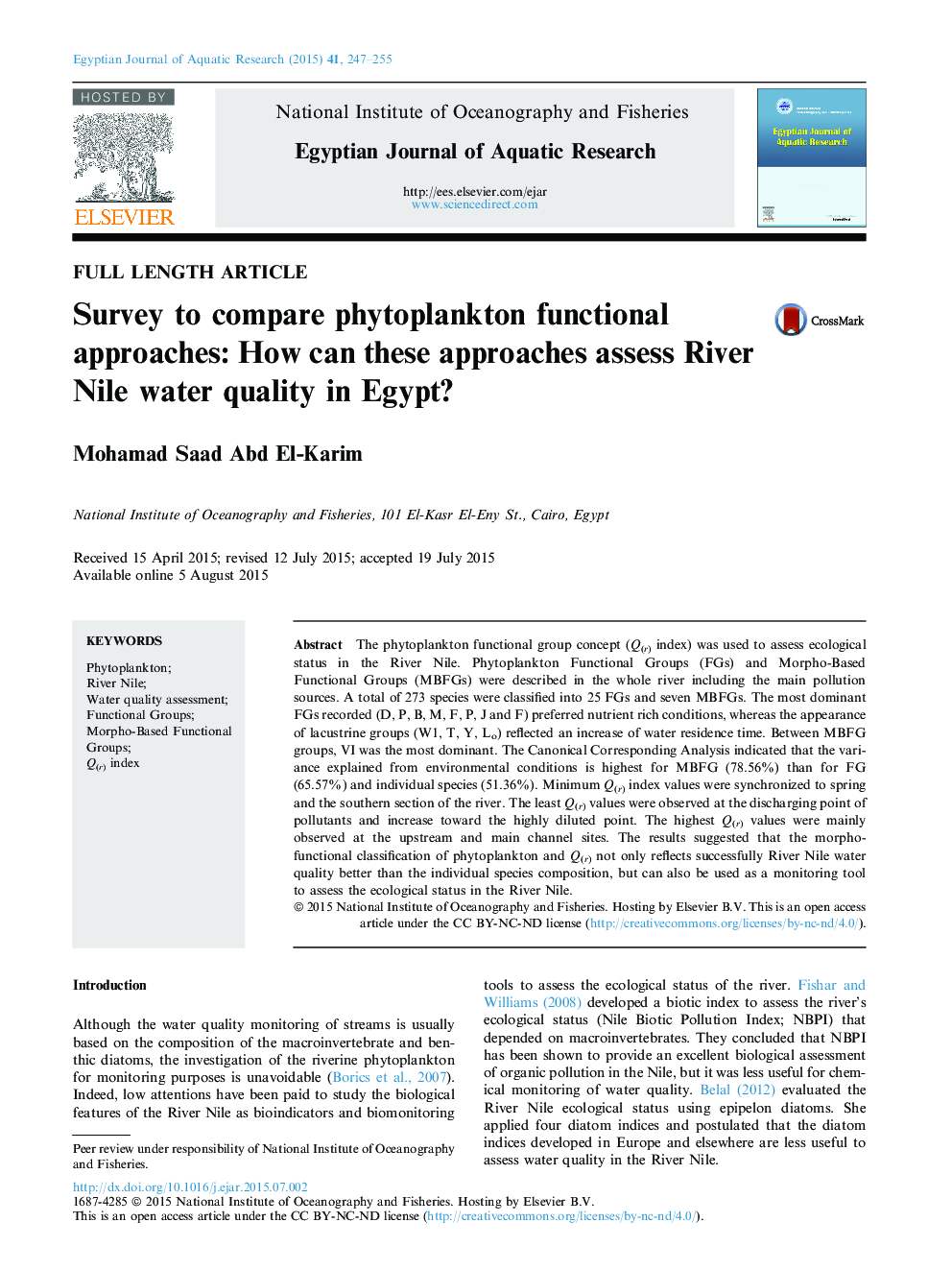| کد مقاله | کد نشریه | سال انتشار | مقاله انگلیسی | نسخه تمام متن |
|---|---|---|---|---|
| 4493088 | 1623614 | 2015 | 9 صفحه PDF | دانلود رایگان |
The phytoplankton functional group concept (Q(r) index) was used to assess ecological status in the River Nile. Phytoplankton Functional Groups (FGs) and Morpho-Based Functional Groups (MBFGs) were described in the whole river including the main pollution sources. A total of 273 species were classified into 25 FGs and seven MBFGs. The most dominant FGs recorded (D, P, B, M, F, P, J and F) preferred nutrient rich conditions, whereas the appearance of lacustrine groups (W1, T, Y, Lo) reflected an increase of water residence time. Between MBFG groups, VI was the most dominant. The Canonical Corresponding Analysis indicated that the variance explained from environmental conditions is highest for MBFG (78.56%) than for FG (65.57%) and individual species (51.36%). Minimum Q(r) index values were synchronized to spring and the southern section of the river. The least Q(r) values were observed at the discharging point of pollutants and increase toward the highly diluted point. The highest Q(r) values were mainly observed at the upstream and main channel sites. The results suggested that the morpho-functional classification of phytoplankton and Q(r) not only reflects successfully River Nile water quality better than the individual species composition, but can also be used as a monitoring tool to assess the ecological status in the River Nile.
Journal: The Egyptian Journal of Aquatic Research - Volume 41, Issue 3, 2015, Pages 247–255
